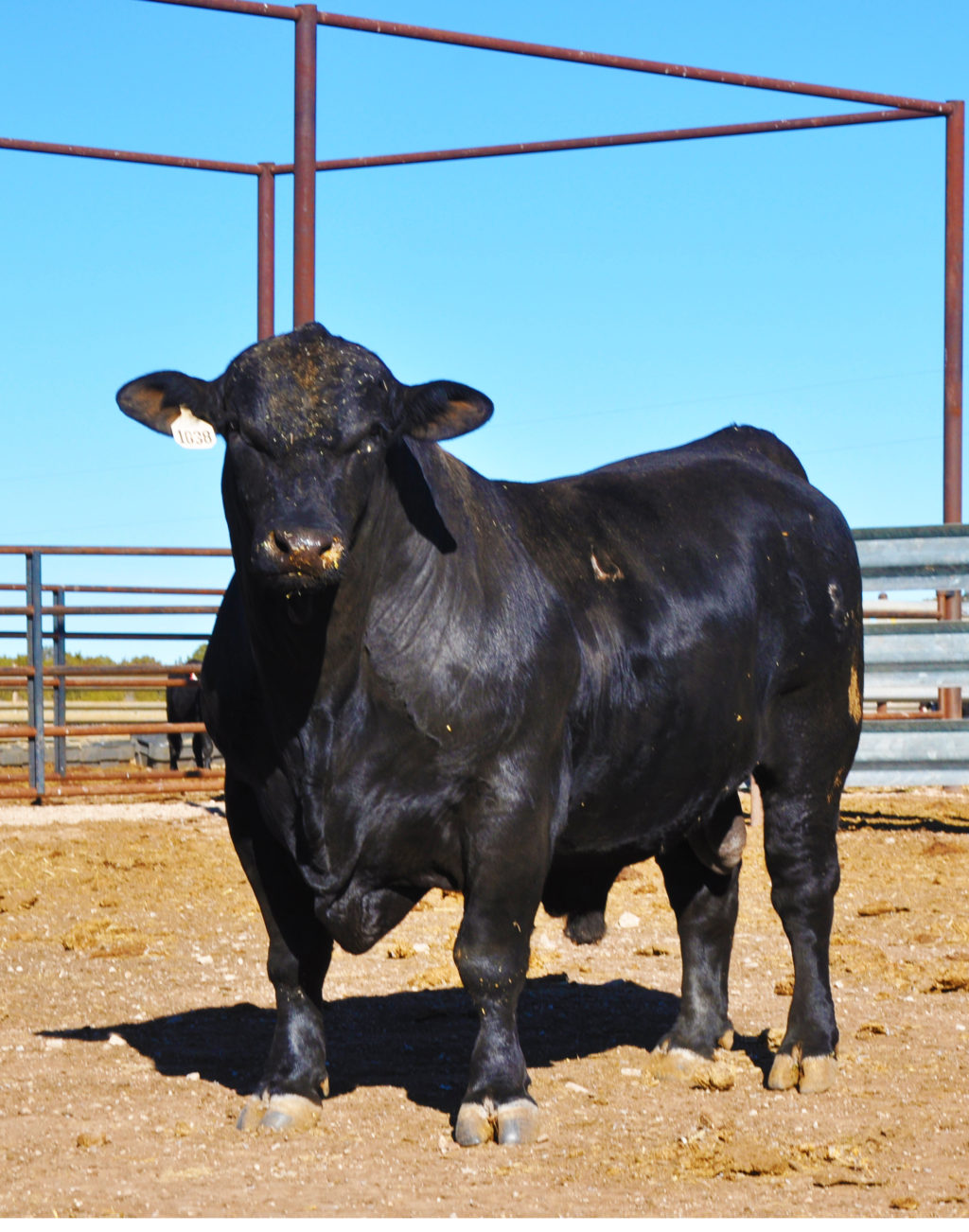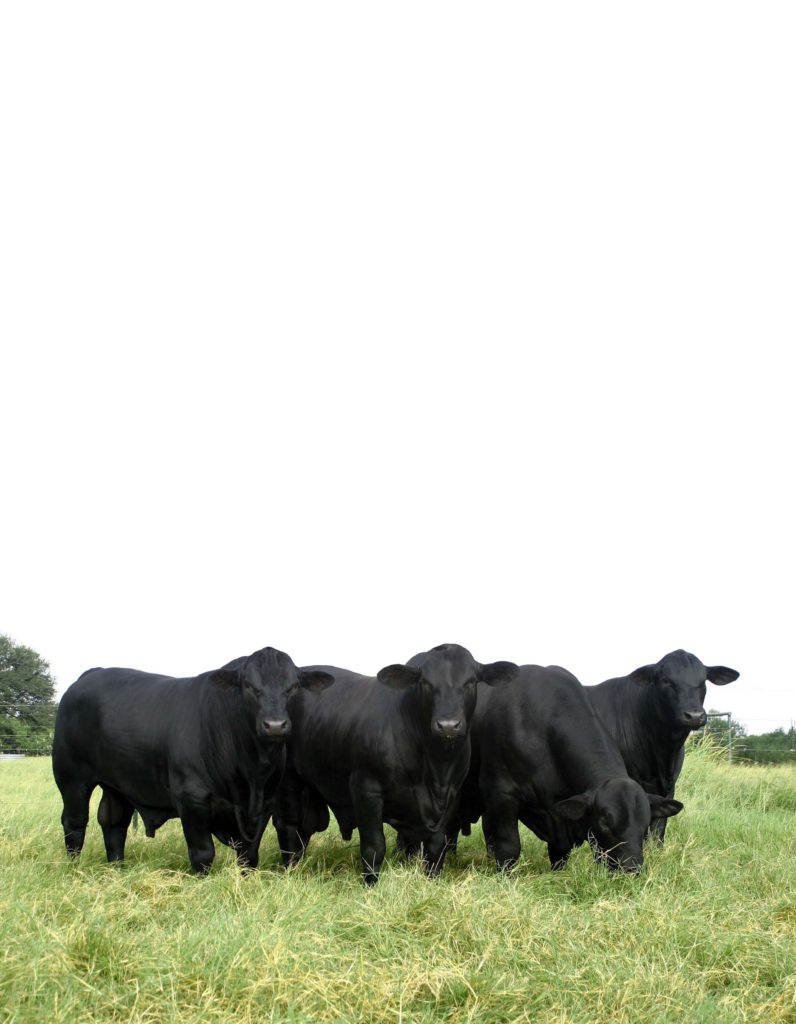
Brangus Bull - Texas Landowners Association
Brangus Cattle Origin and Characteristics
Why they are the choice for Rebuilding the Nation’s Cowherd
This article was written by Tim Perkins, Ph.D., Executive Vice President; and Jason Bates, Director of Field Services and Commercial Marketing, International Brangus Breeders Association. Visit the IBBA website!
The Brangus breed, a 3/8 Brahman and 5/8 Angus composite, was developed to utilize the superior traits of Angus and Brahman cattle. This two breed combination resulted in a breed that unites the traits of two highly successful parent breeds.
The Brahman developed disease resistance, overall hardiness, and outstanding maternal instincts through rigorous natural selection. For more information on Brahman Cattle, check out our article HERE.
Angus cattle, known for their superior carcass qualities, are also extremely functional females that excel in both fertility and milking ability. This unique integration of two breeds has created advantages in fertility, longevity, adaptability and mothering ability, which Brangus females possess.
Data suggest the United States beef cow population is at its lowest since 1952 because of the prolonged drought across the nation, high feed costs, and other factors impacting the beef industry. Luckily, the drought has subsided in most portions of the U.S., corn prices have fallen, global beef demand has improved, and domestic beef demand is good. More specifically, Brangus cattle will be part of the nation’s herd rebuilding that is beginning to occur.

“Brangus offers a plethora of opportunity for commercial cattle producers to increase profitability,” said Tommy Perkins, Executive Vice President for the International Brangus Breeders Association (IBBA). “The strong maternal attributes, in conjunction with the added heterosis, allow cattlemen to capture more dollars in the market place by using Brangus genetics.
Additionally, the feeder calf byproduct will excel in the feedyard as well as yield and grade with the best in the industry for maximizing post weaning profitability.”
The Brangus sired feeder calf has many traits of value to the commercial beef producer, especially out of English cows such as Hereford and Angus. U.S. Meat Animal Research Center (USMARC) data show Brangus x English cross calves have tremendous growth potential, feed efficiency, and increased yield while obtaining carcass quality that is equal to or greater than those sired by Continental breeds. Perkins further states, “Brangus females are outstanding mothers which provide added heterosis over a Bos taurus X Bos taurus cross in terms of efficiency, animal health, and longevity. Likewise, Brangus beef carcasses are accepted in many premium product lines such as Certified Angus Beef and Nolan Ryan All Natural Beef.”
“We continue to develop programs that increase demand for Brangus genetics. The Brangus Gold program, for example, defines the popularity of Brangus sired females,” said Jason Bates, IBBA Director of Field Services and Commercial Marketing. “The Brangus association is committed to adding marketing opportunities for commercial cattlemen using our genetics as we seek strategic partnerships and alliances with industry partners to improve marketability of Brangus sired feeder calves.”
Like Angus, Brangus cattle may be black or red in color and are polled. Although Brangus cattle are known best for their ability to perform well in extremely hot, humid climates, they also thrive in cold climates. Louisiana research suggests that Brangus cows increased body weight during the summer months while Angus cows lost weight. Brangus appeared to be more adapted to the coastal climate which is indicative of their Bos indicus influence.
From a carcass standpoint, Texas A&M University research confirmed the ability of Brangus steers to produce exceptionally high quality carcasses. The test included 330 animals sired by 17 Brangus bulls and 32 animals sired by two high marbling, high accuracy EPD bulls.
All 19 sires were randomly mated to mostly Brangus females. All the cattle were managed, fed and harvested the same. Warner-Bratzler analysis indicated that 97 percent of the Brangus steaks were scored “tender” or better whereas only 94 percent of the Angus steaks scored tender.
Use of genetic evaluation technologies, performance and pedigree tracking software as well as genomics has continued to move Brangus cattle to the forefront of the beef industry.
“Incorporation of Total Herd Reporting (THR) has empowered the Brangus database and ultimately our genetic evaluation,” Perkins said. “IBBA has always been a leader in genetic evaluation technology, and its recent adoption of multi-breed EPD methodology is no different. These genetic selection tools offer producers necessary information for making sound genetic decisions while hitting marketing goals.”
As a commercial bull buyer, consider what the Brangus breed can do for your bottom line. It is IBBA’s belief that producers making the best genetic decisions today will see the most opportunities for profit in the next decade. Please do not hesitate to call 210-696-8231 or go to IBBA’s website at www.GoBrangus.com for additional information.


